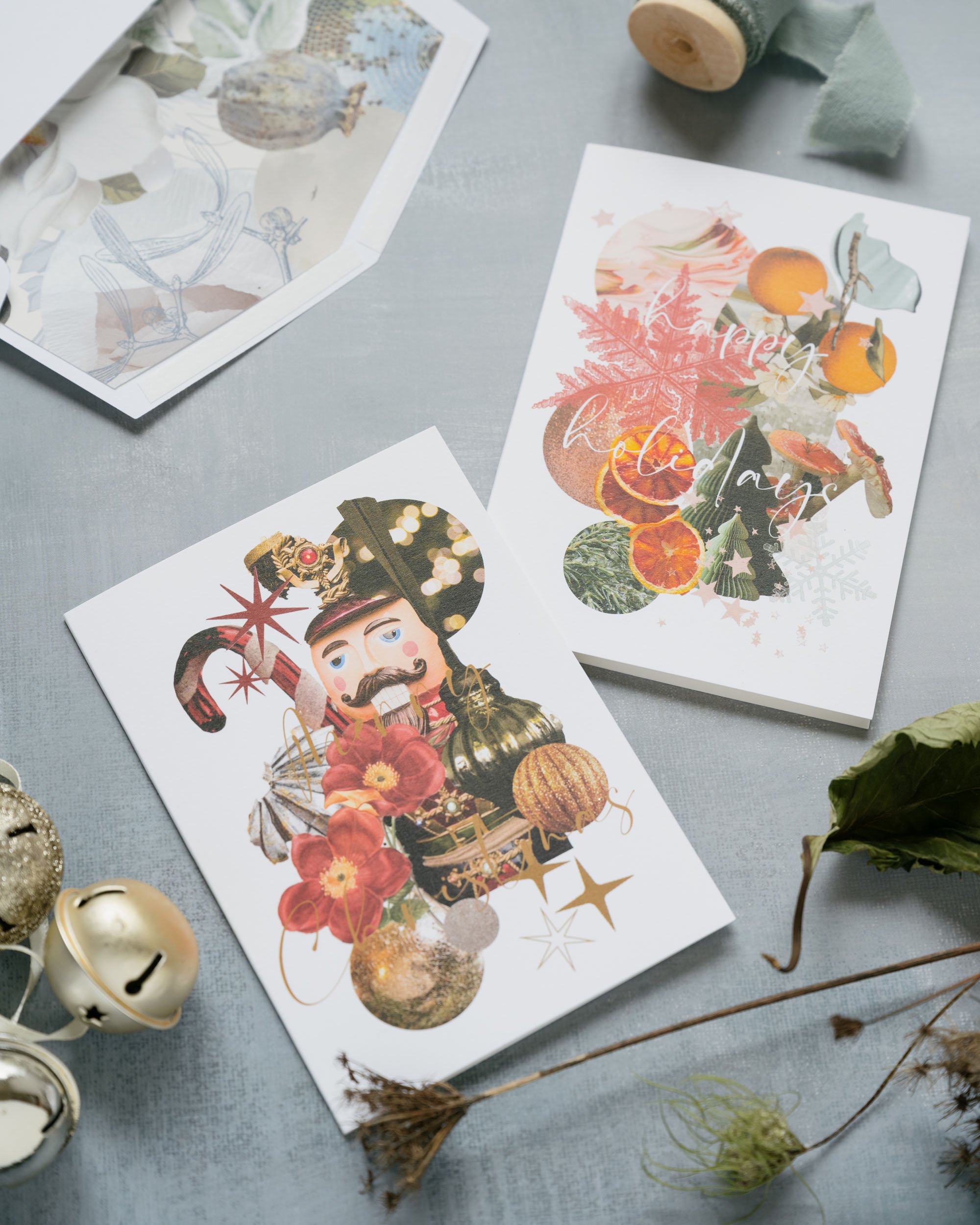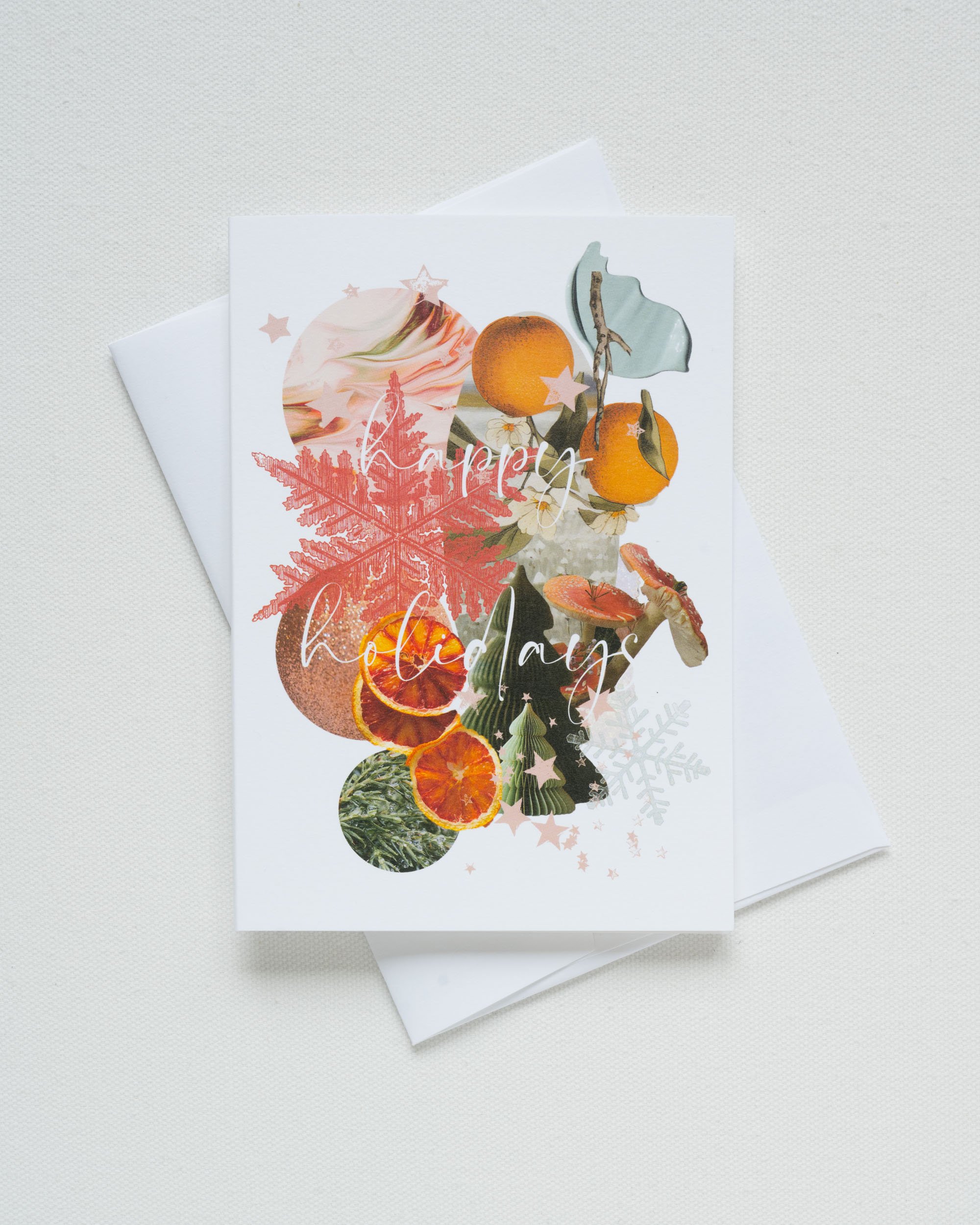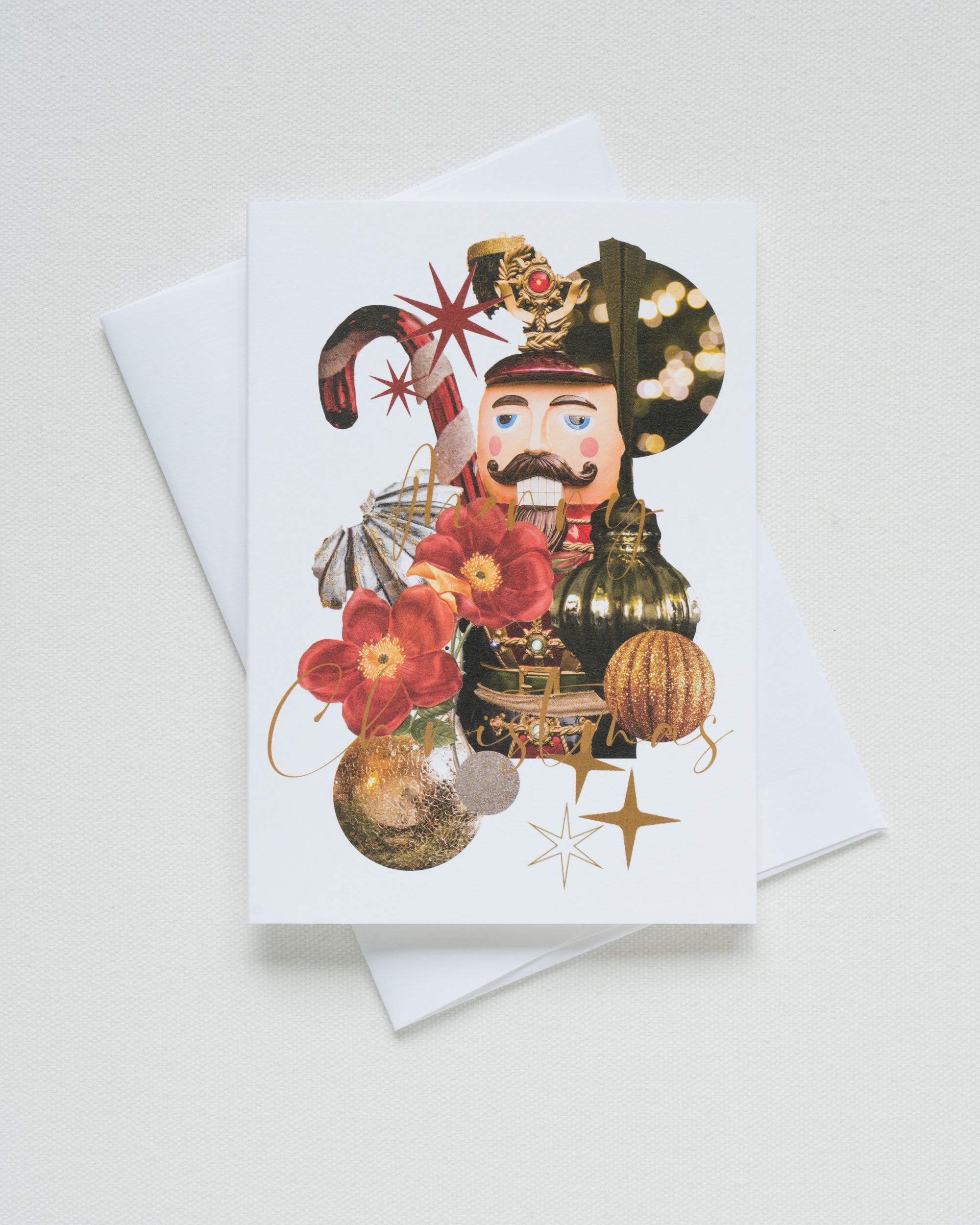The first snow has fallen, and the house is quiet and warm. On the desk rests a set of Christmas cards, kept in the drawer and returned to each year as part of a small tradition. A plate of cookies sits nearby, and the scent of the next creation drifts through the room.
Writing cards at Christmas becomes its own ritual. Names gather on a list: friends seen often, others not spoken to in months, and a few simply not to be forgotten. There is a gentle routine in choosing the words, sealing each envelope, and imagining the cards making their way to distant places, carrying thoughts, memories, and small messages of care.
Each design holds a story of its own. Delicate red and white spotted mushrooms, the iconic Amanita muscaria, appear as symbols of luck and woodland magic, their fairy-tale presence evoking nostalgia for forest walks and seasonal wonder. Bright little oranges, from tangerines to mandarin slices, recall a tradition of abundance and giving: once stored in stockings or shared during the holidays, these fruits were symbols of generosity and small golden treasures. Shimmering baubles, their tradition dating back to 16th-century Germany, recall fir trees once adorned with apples, nuts, and fruits, a promise of spring to come. The word “bauble” itself comes from the Latin babulum, meaning “a child’s toy,” reflecting the playful delight that ornaments bring to every tree.
A complete set of cards makes this ritual effortless. Everything is ready, beautifully designed cards paired with matching envelopes, allowing the focus to remain entirely on the words themselves. No time spent searching, no concern over combinations, only the quiet pleasure of sending messages that truly matter. Each card, each envelope, carries care and intention, ready to be shared with someone dear.
The first snow has fallen, and the house is quiet and warm. On the desk rests a set of Christmas cards, kept in the drawer and returned to each year as part of a small tradition. A plate of cookies sits nearby, and the scent of the next creation drifts through the room.
Writing cards at Christmas becomes its own ritual. Names gather on a list: friends seen often, others not spoken to in months, and a few simply not to be forgotten. There is a gentle routine in choosing the words, sealing each envelope, and imagining the cards making their way to distant places, carrying thoughts, memories, and small messages of care.
Each design holds a story of its own. Delicate red and white spotted mushrooms, the iconic Amanita muscaria, appear as symbols of luck and woodland magic, their fairy-tale presence evoking nostalgia for forest walks and seasonal wonder. Bright little oranges, from tangerines to mandarin slices, recall a tradition of abundance and giving: once stored in stockings or shared during the holidays, these fruits were symbols of generosity and small golden treasures. Shimmering baubles, their tradition dating back to 16th-century Germany, recall fir trees once adorned with apples, nuts, and fruits, a promise of spring to come. The word “bauble” itself comes from the Latin babulum, meaning “a child’s toy,” reflecting the playful delight that ornaments bring to every tree.
A complete set of cards makes this ritual effortless. Everything is ready, beautifully designed cards paired with matching envelopes, allowing the focus to remain entirely on the words themselves. No time spent searching, no concern over combinations, only the quiet pleasure of sending messages that truly matter. Each card, each envelope, carries care and intention, ready to be shared with someone dear.



